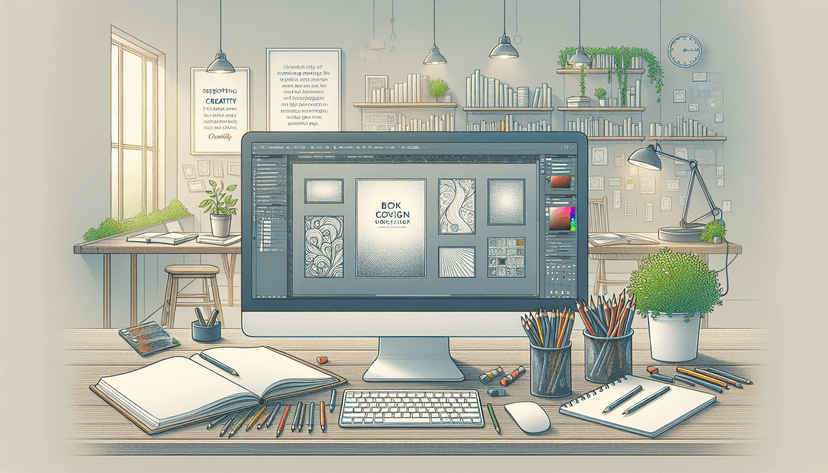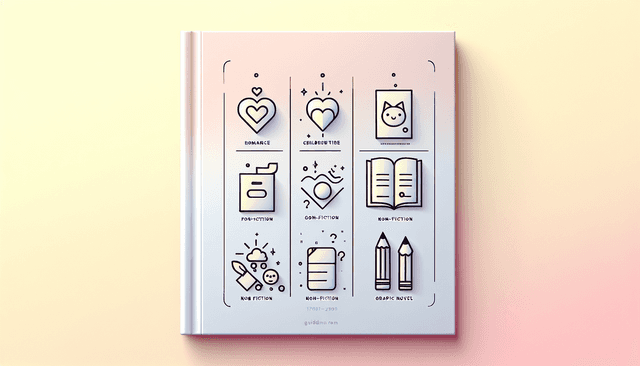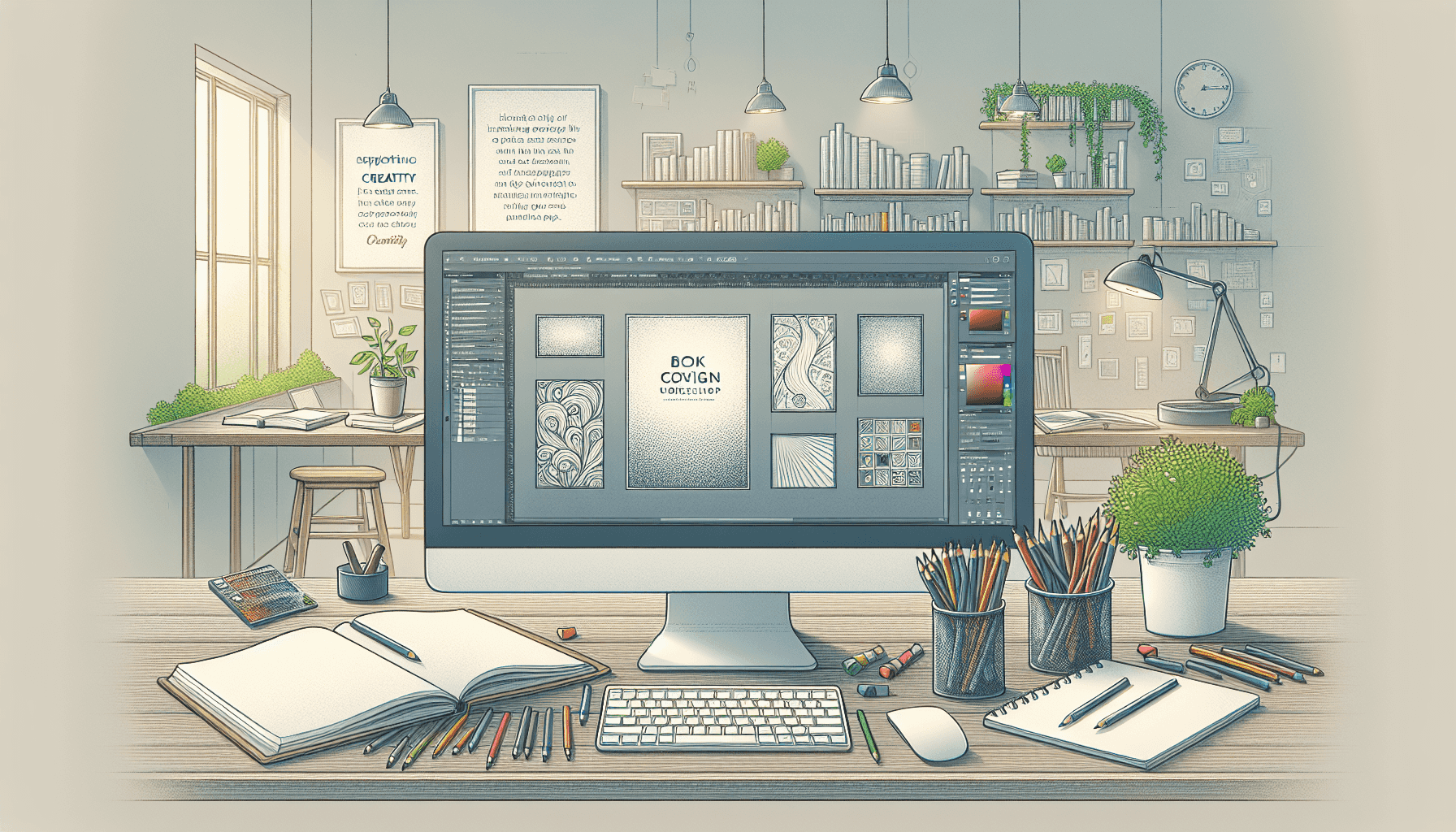Table of Contents
Finding the right pixel size for your book cover can feel daunting, right? With so many formats and platforms out there, it’s easy to feel overwhelmed by what might seem like a simple detail. You’re not alone if you’re scratching your head about print versus digital sizes, or how to choose the perfect dimensions for your genre.
But don’t worry! If you stick around, I promise we’ll break it all down together. You’ll gain clarity on standard sizes for different formats, learn tips for designing eye-catching covers, and discover the best tools to make your creative process smoother.
In this guide, we’ll explore everything from pixel dimensions to best practices, ensuring you’re ready to create stunning book covers that catch readers’ eyes—whether in print or online. Let’s dive in!
Key Takeaways
- Standard print cover sizes range from 5″ x 8″ (1500 x 2400 pixels) to 6″ x 9″ (1800 x 2700 pixels) at 300 DPI.
- Ebook cover dimensions should typically be at least 1600 pixels on the shortest side, ideally a 1.6:1 ratio.
- Choose book cover sizes based on genre; larger sizes attract children’s attention, while non-fiction works best at 6″ x 9″.
- For print, consider spine thickness and bleed areas; for digital, keep designs streamlined for mobile viewing.
- Use tools like Canva or Adobe InDesign to create professional covers, suited for beginners and experts alike.
- Maintain a resolution of at least 300 DPI for prints; use high-quality formats like PNG or TIFF for best results.
- When resizing for different platforms, keep visual balance and save as templates for efficiency in future projects.

Standard Book Cover Sizes in Pixels
When it comes to book covers, size really does matter. The standard dimensions for print book covers typically range from 5″ x 8″ for paperbacks to 6″ x 9″ or larger for hardcovers. In pixels, these sizes translate to 1500 x 2400 pixels for a 5″ x 8″ cover and about 1800 x 2700 pixels for a 6″ x 9″ cover at 300 DPI, which is the most common resolution for printing. Remember, higher DPI means sharper images, so if you’re designing, aim for at least 300 DPI.
If you are creating an ebook cover, the recommended dimensions often vary by platform. For example, Amazon KDP suggests a minimum of 1600 pixels on the shortest side and an ideal aspect ratio of 1.6:1, translating to dimensions like 1600 x 2560 pixels. It’s smart to double-check the latest guidelines from different online retailers, as specifications can change quickly.
Understanding Different Book Formats
Books come in various formats, and each has its own cover size standards. For instance, the paperback format is widely recommended for self-publishing authors because it is affordable and familiar to readers.
Hardcover books tend to have thicker covers and can feature rounded edges, commonly measuring 6″ x 9″ or 7″ x 10″. Then you have your eBooks, which do not follow a physical format but still require a unique cover size to suit the viewing preferences on devices.
For a guide on how to identify which format suits your content best, you might want to explore how to publish a graphic novel or a coloring book. These specialized formats may require unique cover designs to attract the right audience.
Choosing the Right Size for Your Book
Your book’s cover size can significantly impact its marketability. Always align the size with the genre and target audience. For instance, children’s book covers often measure around 8″ x 10″ or larger to grab young readers’ attention.
Consider your content too. If it’s a dense nonfiction book, a standard 6″ x 9″ size works well, while poetry may look stunning in a square format like 8″ x 8″.
Always remember to consult your printer or publishing platform for specific guidelines, as following best practices can make or break your book’s first impression.
Creating Book Covers for Print vs. Digital
The approach to creating a book cover varies based on whether it’s for print or digital publication. For print covers, you need to consider the spine thickness and include bleed areas—those inches that extend beyond the trim size to prevent white edges.
On the other hand, for ebooks, you want to keep the design streamlined and easily viewable on mobile devices. Often, less text and more striking visuals work wonders in grabbing attention on a digital shelf.
Tools like Canva or Adobe InDesign can help combine these design needs seamlessly. They allow for the precision required in both environments, ensuring you create a cover that looks as professional as your content deserves.

Common Pixel Dimensions for Various Genres
When you’re designing a book cover, the genre can significantly influence the pixel dimensions you should opt for.
For instance, a typical romance novel cover often comes in at 5″ x 8″ or 6″ x 9″, translating to roughly 1500 x 2400 pixels or 1800 x 2700 pixels at 300 DPI.
If your book falls into the realm of children’s literature, consider a larger size, like 8″ x 10″ or even 10″ x 10″, as their vibrant covers are designed to visually engage younger audiences.
For non-fiction, a standard 6″ x 9″ size works well to convey professionalism, resulting in similar pixel counts mentioned earlier.
If you’re aiming for a graphic novel, think bigger—sizes like 7″ x 10″ can work well, translating to about 2100 x 3000 pixels, allowing your illustrations to shine.
Remember to keep the cover’s theme in mind; a memoir might be best served with a classic design, while a sci-fi novel could benefit from a more modern, bold look.
Tools for Designing Book Covers
There are plenty of tools out there that make designing book covers a breeze, whether you’re a pro or a complete beginner.
Canva is a fantastic choice for newcomers, as it offers a user-friendly interface and pre-designed templates to get you started.
If you’re looking for something with a bit more depth, Adobe InDesign is the gold standard for professionals; it offers precise control over the layout, making it ideal for intricate designs.
For those focused on illustrations, Clip Studio Paint provides outstanding drawing capabilities and is particularly popular among graphic novelists.
Additionally, tools like GIMP or Affinity Designer can be great budget-friendly alternatives to Photoshop.
No matter your level, there’s a tool out there to help you create a standout book cover.
Best Practices for Book Cover Resolution
Getting the right resolution for your book cover is crucial and can make all the difference in how your artwork comes out once printed or displayed digitally.
Always aim for a resolution of at least 300 DPI for print covers; this ensures crisp, clear images that captivate readers.
For eBooks, you might be able to get away with a lower DPI (around 72-150), but maintaining high-quality images is still essential to create appealing thumbnails.
If you’re unsure about your resolution, it’s a good practice to test the cover on multiple devices or print a sample to see how it looks.
Also, when saving your files, always opt for high-quality formats like PNG or TIFF for print, and JPEG might be sufficient for eBooks, as long as you ensure optimal compression settings.
Lastly, remember to use layers in your design software to separate elements; this way, you can easily make adjustments without compromising the overall quality of your design.
How to Convert Sizes for Different Platforms
Converting your book cover sizes for different platforms can be a hassle, but it’s manageable with the right approach.
First, identify the required dimensions for the platform you’re targeting; for instance, Amazon KDP recommends a minimum of 1600 pixels on the shortest side with an ideal aspect ratio of 1.6:1.
Use a design tool, like Canva, that allows you to create a custom size canvas based on these measurements.
If you’ve already created a cover in one size, use the “Resize” option in tools like Adobe Photoshop, which lets you scale proportionally without losing quality.
When resizing, ensure that you don’t just stretch the image; instead, adjust your design elements to fit the new dimensions and maintain visual balance.
Lastly, consider saving your designed format as a template for future projects, streamlining your workflow down the line.

FAQs About Book Cover Sizes in Pixels
When designing book covers, it’s normal to have questions about sizes in pixels. Let’s tackle some common FAQs to clear up any confusion.
What is the standard size for a book cover in pixels?
The standard size for print book covers is typically around 1500 x 2400 pixels at 300 DPI for a 5″ x 8″ cover and 1800 x 2700 pixels for a 6″ x 9″ cover. Ebooks, on the other hand, may require a minimum of 1600 pixels on the shortest side, depending on the platform.
Should I always use 300 DPI for my book covers?
Yes, for print, using 300 DPI is essential for ensuring clarity and sharpness in the final product. This applies to images and text alike, making your cover look professional and appealing.
How do I know which size to choose for my digital book cover?
Check the guidelines of the platform where you plan to publish. Amazon KDP, for instance, recommends a minimum size of 1600 pixels on the shortest side, with a preferred aspect ratio of 1.6:1.
Can I resize a book cover after I’ve created it?
Absolutely! If you’re using tools like Canva or Adobe Photoshop, they have features that allow you to resize your cover. Just make sure to adjust design elements to maintain a visually appealing balance.
What happens if I don’t follow the size recommendations?
If you ignore the recommended sizes, your book cover may not display correctly on platforms, leading to pixelation or cropping issues. This can hurt your book’s marketability, so it’s worth taking the extra time to get it right.
Remember, investing time in understanding and applying proper pixel dimensions can significantly improve your book’s visual appeal.
FAQs
Standard pixel sizes for book covers vary by format. For print, a common size is 6 x 9 inches at 300 DPI (1800 x 2700 pixels). For eBooks, 1600 x 2560 pixels is often used.
Resolution is crucial because it affects the clarity and quality of the image when printed or displayed digitally. A higher DPI is necessary for print, while digital formats can use lower resolutions.
To convert book cover sizes, use graphic design software to adjust dimensions while maintaining the aspect ratio. Remember to adjust the resolution for print or digital formats as needed.
You can use tools like Adobe Photoshop, Canva, and GIMP for designing book covers. These offer templates, easy editing options, and various resources to enhance your design.



